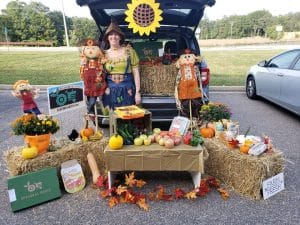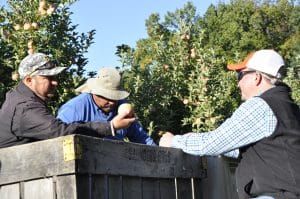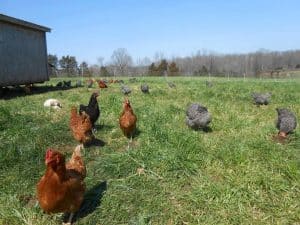Welcome!
This year’s guide includes fall produce that’s in season in Virginia and Maryland… and how to get the most out of it!
Seasonal eating is all about living in sync with the seasons. At Seasonal Roots, we’re so fortunate to also be in sync with our community, from the local farmers and food artisans who make our food to the Seasonal Roots members who enjoy it.
We’re all connected through seasonal eating. We have a (healthy) obsession with local produce, because it’s packed with flavor and nutrients — and easy to enjoy. That’s why our market is customizable and home delivered, Dirt to Doorstep, within days of harvest. Additionally, our wide variety of farmers market favorites means there’s something for everyone – chefs (official or not), foodies, newbies, vegetarians, meat lovers, you name it. Click on the links below to jump straight to whatever interests you!
IN THIS ISSUE
- A is for Apples & Autumn Traditions
- Fall Bucket List
- Meet 2 Makers of Favorite Fall Foods
- Eating Local Fall Food Helps Mother Nature Help You
- The BENEFITS & USES of Fall’s Produce Powerhouses (plus recipes & tips!)
A is for Apples & Autumn Traditions
We are so lucky to live in an area where apple trees thrive. For many of us, apples are the epitome of fall. Their crisp, sweet-tart flavor is woven into our memories and traditions of the season.
With another bountiful harvest upon us and kids heading back to school, apples are getting tossed into lunch boxes and bags.
We’re heading out with friends and family to go apple picking in orchards that roll across peaceful hillsides, laden with red, pink, golden, and green fruit.
At fall parties and festivals, children are bobbing for apples and making a mess eating sticky, delicious caramel apples. Come to think of it, some of us never outgrow caramel apples.
We’re snacking on Pink Ladies, Galas, and Honeycrisps. We’re baking Granny Smiths and Golden Delicious into pies and crumbles, simmering and blending them into sauce, and baking them stuffed with nuts, raisins, and cinnamon. We’re slicing up Fujis and topping them with cheese or peanut butter.
Or maybe we’re doing all those things with entirely different apples. There are so many to choose from – more than 7,500 worldwide, about 2,500 of which are grown here in the U.S.
Our grandmothers may have dried apples and later used them for snacks and pies. Or maybe you remember yours crafting one into a head on a handmade granny doll, with a wrinkled face and cotton for hair. What are your fall apple traditions? Share them with us on Facebook or Instagram!
Fall Bucket List
Top 10 fun things to do with local food this fall
10. Cuddle up and read with a mug of locally roasted coffee.
9. Roast pasture-raised chicken, pork, or beef hotdogs over a bonfire.
8. Make soup or chili and savor it with a fat slice of crusty, buttered bread.
7. Go apple picking.
6. Host a movie night with apple cider and popcorn.
5. Take the kiddos to a pumpkin patch for adorable photo opportunities.
4. Carve pumpkins. Be sure to save the seeds and bake them for a delicious snack.
3. Bake… apple or pumpkin pie or an irresistible crumble.
2. Watch football and snack on kale chips, artisanal chocolate, or Salsa Don Sebastian snacks and treats.
And the Number One fun thing to do this fall is…. (drumroll please….)
1. Take a walk in the crisp fall air to enjoy the power and immunity boost nature offers.
Meet 2 Makers of Favorite Fall Foods
SAUNDERS BROS.
The Saunders family grows some of our favorite fall fruits, including apples and pears!
Since 1915 when brothers Sam, Dick, Doc, Will, and Massie formed a partnership, family has been at the center of the business. The brothers stood for integrity, morality, and honesty. Business deals were made with a handshake or by a man’s word. On much of that same land, the family tradition continues. It’s carried on by Sam’s son, Paul and his family: sons Tom, Bennett, Jim, and Robert, and grandchildren Marshall, Annie, and James.
Over the years, the Saunders family has been growing and perfecting their orchards. Their goals: improve sustainability and produce the tastiest fruit varieties around. Fruit trees sprawl across 200 rolling acres. Wind turbines help keep the peaches warm in early spring. An irrigation system ensures water reaches every tree while recapturing runoff.
These environmentally friendly farming practices, and more, sustain the soils and streams, ensuring the Saunders can keep on growing the crops we love for years to come.
MOBJACK BAY COFFEE ROASTERS
What could be more perfect on a crisp fall morning than a steaming cuppa joe? We can thank local coffee-roasting artisans like Celeste and Jo for giving us that simple pleasure.
Celeste was a professional ballet dancer and Jo was a corporate IT guy. But they had always dreamed of running their own business together and they both loved the waters of the Chesapeake Bay near their home in Virginia. They’d talk about it over coffee. “Our morning ritual has always been having our first cup of coffee together,” Celeste says. “We wanted to wake up in the morning knowing that we were working to make a difference in the world.” They decided to launch Mobjack Bay Coffee Roasters and make it eco-friendly.
The business combines their love of coffee, family, and the water: the coffee beans are roasted right in the shop… Celeste’s father helps in the retail store while a close friend is the master roaster… and a portion of every coffee bag sold benefits the Chesapeake Bay. They also focus on beans grown by socially responsible farmers who follow Fair Trade and Rainforest Alliance guidelines. “We are thinking globally while acting locally” says Celeste. The same could be said for Seasonal Roots members who are supporting local and the environment!
Eating Local Fall Food Helps Mother Nature Help You
When you eat what’s locally available each season, you help nature while nature helps you. It’s a mutually beneficial arrangement! Here’s how it works.
OUR BODIES ARE MADE FOR EATING WHAT’S IN SEASON LOCALLY.
EATING SEASONALLY HELPS YOU because Mother Nature designed each season’s produce to give our bodies what they need. For example, now that it’s fall, the local apple harvest is underway. Like a lot of other fall produce, apples are high in fiber and pectin which help cleanse the intestines and digest fats. And that helps us get ready for cold weather.
EATING SEASONALLY HELPS NATURE because it supports a healthy local ecosystem. Pollinators depend on the nectar in those apple blooms in spring. Orchards help clean the air and provide habitat for all kinds of native animals. And the roots stabilize hillsides and enrich an underground world of good fungi and soil critters. And that’s just one local food example!
LOCAL FOOD DOESN’T TRAVEL FAR.
A SHORT TRIP HELPS YOU because farmers can pick their produce when it’s ripe and you can eat it right away. Fruits and veggies absorb flavor, vitamins, minerals, and antioxidants from the sun and earth right up until they’re harvested. But when produce is shipped long distances, it has to be picked early and never reaches its full potential… even if it eventually looks ripe. That’s our industrial food system’s sad trade-off – it delivers lots of quantity but lacks flavor and nutrients. Meanwhile…
A SHORT TRIP HELPS NATURE because it puts out fewer emissions. So local food’s carbon footprint is smaller than food that comes from far away. That’s especially true for heavy produce like big bins of apples! You can learn more about this research in our Food Miles blog post.
LOCAL FOOD IS REAL FOOD.
REAL FOOD HELPS YOU because it contains real nutrients that boost our immune systems and keep us healthy. For example, fresh, ripe local food is packed with antioxidants which may help prevent or delay cell damage. Antioxidant-rich fall foods include apples (of course!), plus carrots, celery, and more. When you get your antioxidants from food, studies have found it can improve cognitive function and help prevent cancer, heart disease, and other illnesses! Antioxidant supplements have not been proven to do those things.
REAL FOOD HELPS NATURE when it’s grown locally and sustainably, the way our Seasonal Roots partners grow it. Our local farmers work in harmony with nature to control pests, protect the soil, and conserve water. Their crop fields tend to be smaller and more varied, like nature itself, because an ecosystem that’s full of complex variety is more resilient. Industrial-sized monocrops, where fields of the same plant stretch as far as you can see, are unnatural and vulnerable — a single pest or disease can wipe it all out. So monocropping requires loads of chemicals and other unnatural methods.
BENEFITS & USES of Fall’s Produce Powerhouses
Below are some of the health benefits of seasonal eating. We’ve also selected a few of the Seasonal Roots team’s favorite recipes HERE.
As we get closer to Thanksgiving, we’ll be sharing some holiday feast tips. Oh, and be on the look-out for a little fact-finding mission that will reveal which Thanksgiving dishes make the favorites list, coming soon!
APPLES

BENEFITS: Heart-healthy flavonoids in the skin, antioxidants, and 4 grams of dietary fiber.
USES: Eat raw as a stand-alone snack, in a smoothie or salad, in pork dishes, or cooked up as apple sauce or pie.
HARVEST: August-November
BEETS
BENEFITS: Red and gold beets are nutritional champs known for their high concentration of nitrates and accompanying blood pressure-lowering effects. They are also high in fiber and packed with nutrients.
USES: Beets are best enjoyed cooked and then can be used in salads, as a side, or even in a colorful dip.
HARVEST: year-round
BROCCOLI
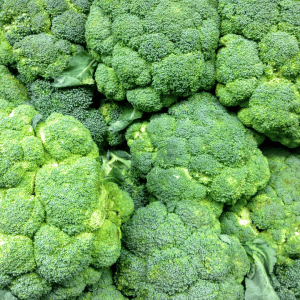
BENEFITS: One cup of broccoli has as much vitamin C as an orange. Sulforaphane and other natural compounds in broccoli are reported to stop cancer cells from forming in your body.
USES: Enjoy broccoli raw, in a salad, with a dip, or mixed into a fantastic stir fry.
HARVEST: September-November
BRUSSELS SPROUTS

BENEFITS: Brussels sprouts are high in fiber, vitamin K, vitamin C, plus folate and iron.
USES: Serve as a side or atop salads and meats, steam or roast, serve with salt or add tangy or savory sauces like balsamic vinegar.
HARVEST: September-March
CARROTS

BENEFITS: Loose carrots are a particularly good source of beta carotene, fiber, vitamin K1, potassium, and antioxidants.
USES: Raw with dips or in salad, roasted as a side, or that perennial favorite — carrot cake!
HARVEST: September–November
CAULIFLOWER

BENEFITS: Vitamin C and compounds that may help to prevent cancer and lower cholesterol.
USES: Raw with dips or in salad, steamed or roasted as a side, blended like mashed potatoes or pureed into soup.
HARVEST: September–June
CELERY ROOT (a.k.a. Celeriac)
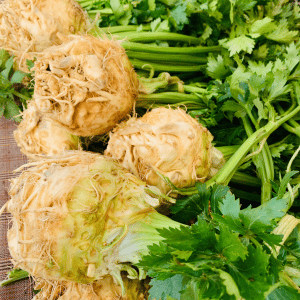
BENEFITS: High in fiber and a good source of vitamins B6, C, K and minerals phosphorus, potassium, and manganese.
USES: Raw or cooked, celery root is a versatile vegetable. It can be used as a base for salads, stews and soups and also works well mashed, baked, roasted or boiled.
HARVEST: September–November
CELERY
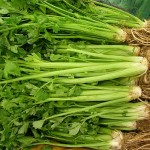
BENEFITS: Packed with antioxidants, vitamin C, beta carotene, and flavonoids, and a great source of phytonutrients which have been shown to reduce inflammation.
USES: Celery is great raw and you can eat the leaves too! It’s a classic base ingredient in soups and stews, or try it steamed or baked for a twist on this good old reliable veg.
HARVEST: October-December
DARK LEAFY GREENS
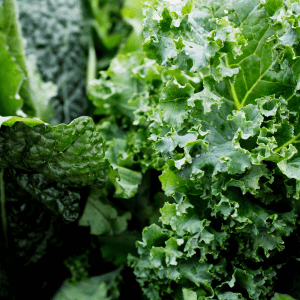
BENEFITS: Iron, calcium, vitamins A and C, and fiber.
USES: Raw in a salad or smoothies, or baked into other dishes. Cooking makes it easier for our bodies to digest its nutrients.
HARVEST: Year-round
FENNEL

BENEFITS: Vitamin C, potassium.
USES: Looks like the love child between a dill plant and an onion but has a mild licorice flavor – add to soups, sides, and mains.
HARVEST: Fall through spring
PARSNIPS

BENEFITS: Potassium, fiber.
USES: Sweeter and nuttier than carrots, roast alone or with just about every other fall vegetable.
HARVEST: October-April
PEARS
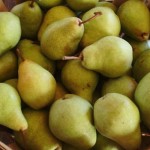
BENEFITS: Vitamin C, copper, 4 grams of fiber.
USES: Enjoy raw alone or with cheese, in salads, and baked or poached desserts.
HARVEST: August-February
PUMPKINS

BENEFITS: Potassium, tons of fiber, B vitamins.
USES: Pies, soups, and sides, plus toss seeds in olive oil and salt, then roast for an addictive snack or salad topping. Also jack o’lanterns!
HARVEST: October-February
RUTABAGAS

BENEFITS: Vitamin C, fiber.
USES: Like a cross between a turnip and a parsnip, they’re delish in casseroles, pureed with turnips and carrots for soup, or roasted with ginger, honey, or lemon.
HARVEST: October-April
SPINACH
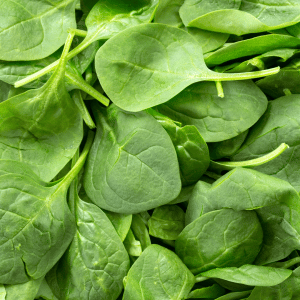
BENEFITS: Vitamins A, C, K, iron, and disease-fighting phytonutrients.
USES: Raw in a salad or smoothies, steamed as a stand-alone or baked into other dishes. Cooking makes it easier for our bodies to digest its nutrients.
HARVEST: Year-round, but it gets sweeter after the first nip from Jack Frost
SWEET POTATOES
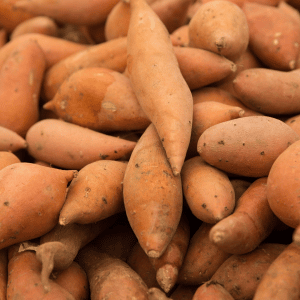
BENEFITS: Vitamin A, iron, and anti-inflammatory properties.
USES: Roast like a potato or cut up like fries, add to salads and stews, puree into soups.
HARVEST: September–December
TURNIPS

BENEFITS: Vitamin C (roots), vitamins A, K, and folate (leaves).
USES: Steam, roast, or boil the roots, flavor with fennel, bread crumbs, or brown sugar, adds a slightly bitter complement to sweet parsnips, carrots, or mashed potatoes. Steam or stir fry the leaves.
HARVEST: September–April
WINTER SQUASHES
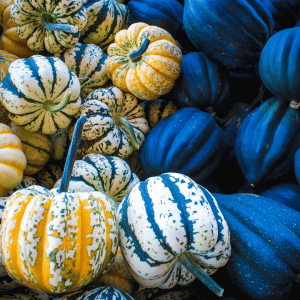
BENEFITS: Omega-3 fatty acids, vitamin A.
USES: Butternut and acorn have thick skin and can be stored for months. Bake, steam, or roast plain or with cinnamon and ginger, add to salads and stews, puree into soups.
HARVEST: October–February
Special Offer
On or before October 7, new members in our delivery area can join for just $10. Enter promo code “Fall22” when they sign up here.
About Seasonal Roots
Since 2011, Seasonal Roots’ online farmers market has connected Virginia families with local family farmers who use sustainable, humane practices. Our neighborhood market managers – who believe in living better through scrumptious, healthy eating, being kind to animals, protecting the environment, and spreading joy – home-deliver freshly harvested produce, pastured eggs, grass fed dairy and meat, plus artisan fare. We empower our members to eat better and live better with more nutritious, flavorful food that’s good for us and good for the planet. More info at seasonalroots.com.


